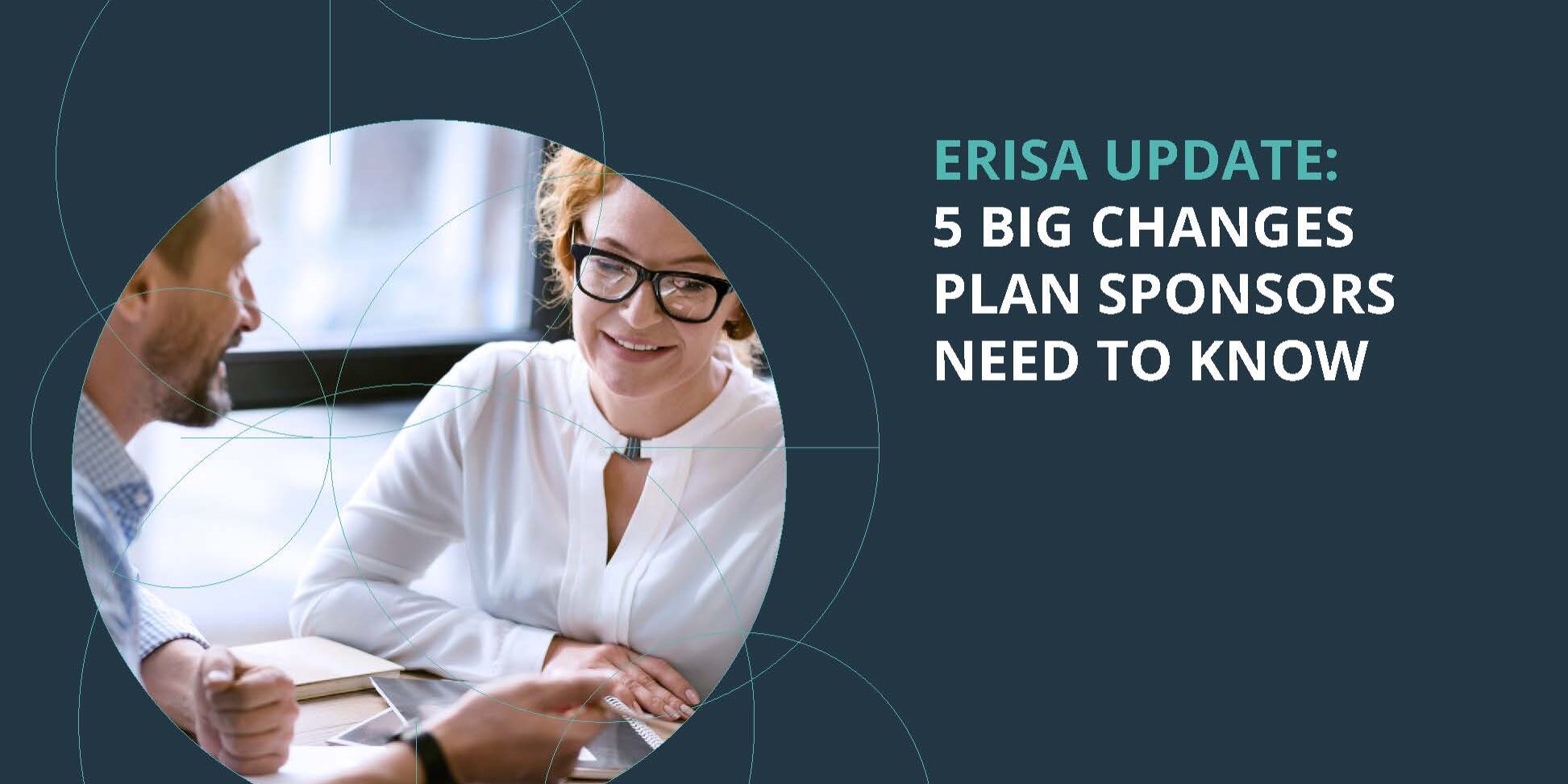Search Posts
Recent Posts
- Video 2021-Q3: 20 Questions To Benchmark Your 401(k) September 14, 2021
- Cycle 3 401(k) Deadline quickly approaching August 31, 2021
- Do You Want to Be Taxed Now or Later? August 17, 2021
- What’s the buzz about PEP, MEPs and SEPs? August 3, 2021
- Plan Sponsor Guide 2021 Q3: Different Types Of Workplace Plans July 20, 2021
Categories
Subscribe!
Thanks for subscribing! Please check your email for further instructions.

5 important ERISA changes you need to know
If navigating a worldwide pandemic weren’t enough, the world of employee benefits continues to throw curve balls at employers and plan sponsors who must constantly keep up. Below are 5 big changes that retirement plan decision-makers should know about.
1. How far will retirement savings go
All defined contribution (DC) plan benefits to be expressed as lifetime income. The SECURE Act requires that participant account balances in DC plans be expressed as both a life annuity and a qualified joint and survivor annuity (“QJSA”). A new DOL regulation applies the rule to defined contribution plans, whether or not they in fact provide annuities as a form of distribution.
Each benefit statement issued after September of 2021 must contain the required disclosures. The new disclosures must be made once every 12 months. So long as they are fully in accordance with the new regulation, plan sponsors, fiduciaries and others are shielded from any liability arising from such disclosures.
2. Pooled Employer Plans are coming
Is their strength in numbers or is it better to stay independent? One mission of the SECURE Act is to expand retirement savings. One of the ways in which that statutory purpose is achieved is through conditionally permitting groups of unrelated employers to form a new shared retirement plan called pooled employer plans (PEPs).
Among other requirements, PEPs must designate a pooled plan provider (PPP) to serve as a named fiduciary and plan administrator. Additionally, the PPP must register with the Department of Labor and the Treasury Department before beginning operations. It is anticipated that those participating in a PEP will save on administrative costs as only one Form 5500 will be filed. This will be a developing topic for 2021, and we will keep you informed.
3. CARES Act follow up
What is one more long-haul impact of the pandemic? The CARES Act, passed in response to the COVID-19 crisis, created many new features for retirement plans including special COVID-related loans and distributions. These and other changes are allowed without formal amendments to plan documents. Plan sponsors must ensure that plans are properly amended per CARES Act rules.
Additionally, a unique feature of COVID-related distributions presents a challenge to plan sponsors. Special attention may be required. Given the three-year window available to pay back COVID distributions to a qualified plan, it is possible that plan sponsors may be asked that COVID distributions from another plan be allowed into their plan, because the participant has a new employer (you) since taking the COVID related distribution. Plan sponsors should have a process in place to address this unique situation.
4. 401(k) Cyber theft causes ongoing litigation
How should you digitally protect your retirement plan? In a recent court case, Bartnett v. Abbott Laboratories, et al., a plan participant who had assets stolen from their retirement account by a sophisticated cybercriminal, sued both the plan sponsor and the third-party administrator. The lawsuit raises important and unique questions about whether ERISA’s fiduciary duties can be breached under such circumstances and how applicable state laws interact with ERISA’s regime.
Plan sponsors should pay close attention to such lawsuits to understand how the law develops and any new best practices. Plan sponsors should also be asking questions to their insurance brokers to find out whether insurance coverage is available to cover cybercrime, as it appears not to be slowing down. For more best practices on cybersecurity, contact us for a helpful checklist: Hacked, how protected is your company’s 401(k) plan?
5. Should Dunder Mifflin be worried?
E-disclosure regulation permits web posting and email delivery of retirement plan documents. Retirement plan administrators who want to use electronic media as a default to furnish covered documents to covered individuals now have a safe harbor via new DOL regulations.
There are two options for electronic delivery: website posting and email delivery. Previous safe harbor guidance on electronic disclosures remain available to plan sponsors who want to keep relying on it. For more information on e-disclosure, read our article, Think Green: Have you considered 401(k) e-disclosures?
Plan sponsors are constantly bombarded with legislative and regulatory changes, as well as court opinions that affect how they run their benefit plans. To make sense of it all, plan sponsors should seek out qualified advisors to assist with their compliance needs. Contact us today to discuss how these changes may impact your plan.
